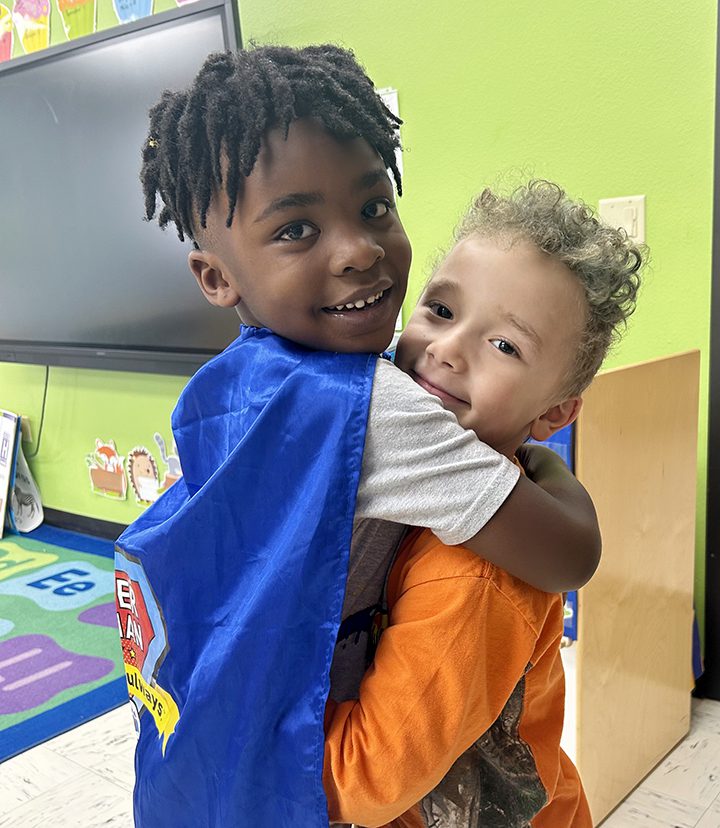Why We Need Trauma-Sensitive Schools
May 28, 2019

How many students do you think are dealing with significant traumas in each classroom in America? How many are contending with violence, sexual abuse, chemical dependence, mental health issues, or an incarcerated parent?
When the CDC conducted research on Adverse Childhood Experiences (ACE) to answer this question, the results were shocking. More than half of all respondents reported experiencing these disruptive events in childhood. This prevalence of childhood trauma surprised investigators. Add to these statistics other struggles like chronic homelessness, food insecurity, and medical issues and the numbers soar even higher.
 School administrators and teachers need to take this prevalence seriously because navigating trauma affects how students learn. Processing these stresses affects everything from developing language skills to managing behavior. A child working through these challenges may have a harder time forming healthy relationships with other students and teachers.
School administrators and teachers need to take this prevalence seriously because navigating trauma affects how students learn. Processing these stresses affects everything from developing language skills to managing behavior. A child working through these challenges may have a harder time forming healthy relationships with other students and teachers.
As teachers know well, childhood shapes a trajectory for fulfillment and success in life. Responding effectively to the needs of traumatized students must become a priority in our schools.
6 Ways to Make Your School Safer for All Students
To meet the needs of these student populations, a movement to make schools trauma-sensitive is sweeping the nation. Approaches differ by community, but the Trauma and Learning Policy Initiative (TLPI) defines a trauma-sensitive school by the following core attributes:
A Whole-School Commitment Shared by All Faculty and Staff
The whole school community being on board to meet the needs of their trauma-affected students is as important as the targeted intervention program and/or the specialized staff to implement them. Everyone from the principal to the janitors need to be aware that acute trauma is more common than they might think, that it affects how students learn, and that a supportive community can help students affected by serious adversity flourish.
A Safe School Environment
For many students, school is a haven from a storm of violence, unpredictability, and pain at home. It’s imperative, then, that schools maintain themselves as safe spaces from physical, academic, emotional, and social threats.
A Holistic Approach
Since the consequences of trauma play out in a variety of ways, successfully meeting the needs of students must include behavioral, emotional, relational, and academic components. In each arena, faculty and staff must be equipped both to deal with the manifestations of trauma and address the roots of this behavior.
A Supportive Community Where Students Practice Developing Skills
Schools are for learning, and how do we learn if we don’t have a supportive space for practicing? This condition becomes even more acute for traumatized students. They may need to un-learn harmful conditioning from their personal histories and discover healthy strategies to deal with problems. By offering students space to grow and try out new ways of being, schools can help these struggling students thrive.
 Team Responsibility for All Students
Team Responsibility for All Students
A truly holistic, all-school approach enlists the entire faculty and staff. No single coordinator or specialist can be tasked with caring for trauma-sensitive students. Communication across the school helps ensure no child is left behind. As an added benefit, when administrators and teachers work together, they model the kind of teamwork students are learning.
Adaptation to the Changing Needs of Students
Every school community is different, and we’re still learning about the needs of traumatized students. That means there can be no “one size fits all” panacea. Instead, school officials need to pay close attention to the changing needs of their community and adapt their practices to these demands.
The needs of traumatized students are broader and deeper than most educators imagined. Fortunately, the movement to make schools more trauma-sensitive is helping to meet these needs and helping students from all kinds of backgrounds, succeed.
This is the first installment of a two-part series.
In our next blog, we’ll look at how social-emotional learning programs can serve strategic purposes in trauma-sensitive schools.
Respectful Ways offers social-emotional learning curriculum for three age groups: PreK-2, 3-5, and 6-12 students using interactive, digital modules on compassion, perseverance, respect and responsibility, as well as Conflict Resolution, Emotional Regulation, Mental Health, Personal Safety, and Trauma-Affected Students.
Photos by Bùi Nam Phong and Inzmam Khan from Pexels
This entry was posted in SEL News. Bookmark the permalink.


 Our 1st graders loved the Be Kind: It Feels Good course. The Kindness Hunt and bucket filling activities were the best. Very engaging.
Our 1st graders loved the Be Kind: It Feels Good course. The Kindness Hunt and bucket filling activities were the best. Very engaging. The Bored, Get Creative module was perfect for our 4th graders pre-winter break. We talked about things they could do if “bored”.
The Bored, Get Creative module was perfect for our 4th graders pre-winter break. We talked about things they could do if “bored”.